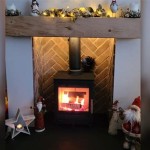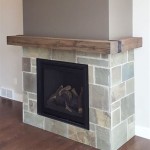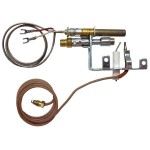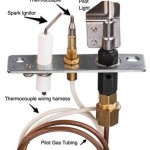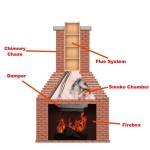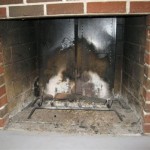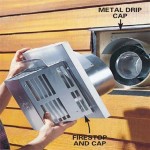Replacing a Gas Fireplace with a Wood Burner: A Comprehensive Guide
The decision to replace a gas fireplace with a wood burner is a significant undertaking involving various factors, including regulatory compliance, structural considerations, and personal preferences. This article provides a comprehensive overview of the process, outlining key points to consider before, during, and after the conversion.
Gas fireplaces offer convenience and ease of use. They ignite quickly, provide consistent heat output with thermostatic control, and require minimal maintenance compared to wood-burning options. However, a desire for a more traditional aesthetic, a perceived increase in heating efficiency with modern wood-burning stoves, or a preference for utilizing a renewable fuel source can motivate homeowners to consider switching to wood.
Wood-burning fireplaces and stoves evoke a sense of rustic charm and offer a unique ambiance. The crackling fire and the aroma of burning wood create a cozy atmosphere. Furthermore, in regions where wood is readily available and relatively inexpensive, heating with wood can be a cost-effective alternative to natural gas or electricity, especially during peak usage periods. However, wood burning also entails responsibilities, including sourcing and storing firewood, managing ashes, and adhering to environmental regulations.
Assessing the Existing Structure and Chimney
The existing chimney is a crucial element that requires thorough inspection. Gas fireplaces commonly vent through smaller, often flexible, metal flues that are not designed for the high temperatures and corrosive byproducts of wood combustion. Converting to a wood burner typically necessitates relining the chimney with a correctly sized, insulated flue. This is paramount for safety, proper draft, and preventing chimney fires.
A professional chimney sweep or certified installer should perform a comprehensive inspection. This inspection will determine the chimney's structural integrity, identify any existing damage or deficiencies, and assess its suitability for wood-burning appliances. The inspection should cover the entire length of the chimney, from the firebox connection to the chimney cap. Issues like cracks, missing mortar, or creosote buildup must be addressed before proceeding with the conversion.
The size and height of the chimney also play a crucial role in ensuring proper draft. A properly sized chimney allows for efficient removal of smoke and combustion gases, preventing backdrafting and improving the overall performance of the wood burner. The chimney height should comply with local building codes and be sufficient to create adequate natural draft, typically extending at least two feet above the highest point of the roof within a ten-foot radius.
Furthermore, the existing firebox may not be suitable for a wood-burning appliance. Gas fireplaces are often shallower and have different firebrick configurations than those designed for wood. Depending on the situation, the existing firebox may need to be modified or completely removed to accommodate the new wood burner.
The structural support around the fireplace, including the hearth and surrounding walls, must also be assessed. Wood-burning appliances are heavier than gas fireplaces and may require additional support to ensure structural stability. The hearth must be non-combustible and extend far enough to protect the surrounding flooring from sparks and embers. The surrounding walls must also be adequately protected with non-combustible materials to prevent heat damage.
Selecting the Appropriate Wood-Burning Appliance
Selecting the right wood-burning appliance is critical for efficient heating, safety, and regulatory compliance. Several options are available, including wood-burning fireplaces, wood stoves, and fireplace inserts. Each type has its own advantages and disadvantages, and the best choice will depend on individual needs and preferences.
Wood-burning fireplaces offer a traditional aesthetic and create a focal point in a room. However, they are generally less efficient than wood stoves or fireplace inserts, with a significant portion of the heat escaping up the chimney. Open fireplaces also require a larger amount of firewood to produce comparable heat.
Wood stoves are self-contained heating units that offer higher efficiency compared to open fireplaces. They are designed to burn wood more completely, extracting more heat from each log. Wood stoves are available in various sizes and styles, and some models include features like catalytic converters or secondary combustion systems to further reduce emissions and improve efficiency.
Fireplace inserts are designed to fit inside an existing fireplace opening, providing the benefits of a wood stove while maintaining the appearance of a traditional fireplace. Inserts typically have a sealed firebox and a blower fan to circulate heat into the room. They are a good option for homeowners who want to improve the efficiency of their existing fireplace without completely changing its appearance.
When selecting a wood-burning appliance, it is essential to consider its heating capacity, efficiency rating, and emissions certification. The heating capacity should be appropriate for the size of the room or area to be heated. An oversized appliance will overheat the space, while an undersized appliance will struggle to maintain a comfortable temperature.
The efficiency rating indicates the percentage of heat produced by the appliance that is actually transferred into the room. Higher efficiency ratings mean less heat is lost up the chimney and more heat is available to warm the home. EPA-certified appliances meet stringent emissions standards, contributing to cleaner air quality and potentially qualifying for tax credits or rebates.
Consider also the size of wood the appliance accepts. Larger appliances generally accept longer logs, reducing the frequency of loading. The style and aesthetic should also be considered to ensure the appliance complements the existing decor of the home.
Installation and Regulatory Compliance
The installation of a wood-burning appliance is a complex process that requires specialized knowledge and expertise. It is strongly recommended to hire a certified installer to ensure the installation is performed safely and correctly. A professional installer will also be familiar with local building codes and regulations.
Before starting the installation, it is essential to obtain the necessary permits from the local building department. Permits ensure that the installation meets all applicable safety standards and regulations. The permit process typically involves submitting plans and specifications for the installation, as well as scheduling inspections at various stages of the project.
The installation process typically involves removing the existing gas fireplace, preparing the firebox and chimney, installing the new wood-burning appliance, connecting the flue, and testing the system. The installer will ensure that the appliance is properly positioned, leveled, and secured. The flue connection must be airtight to prevent leaks of smoke and combustion gases into the home.
Once the installation is complete, the installer will perform a final inspection to ensure that all aspects of the installation meet code requirements. This inspection may include checking the draft, testing the operation of the appliance, and verifying that all safety clearances are met. A certificate of compliance will typically be issued upon successful completion of the inspection.
Some areas have restrictions on wood burning, particularly during periods of poor air quality. It is crucial to understand local regulations regarding wood burning bans and emissions limits. Some municipalities offer incentives for replacing older, less efficient wood-burning appliances with newer, cleaner-burning models.
Homeowners are also responsible for properly maintaining their wood-burning appliances and chimneys. Regular cleaning and inspections are essential to prevent chimney fires and ensure the safe and efficient operation of the system. The chimney should be cleaned at least once a year, or more frequently if heavy use occurs.
Proper wood storage is also crucial. Firewood should be stored in a dry, well-ventilated area to prevent mold and decay. Seasoned firewood burns more efficiently and produces less smoke than green wood. Stacking the wood off the ground allows for better air circulation and helps to prevent pest infestations.
Safe operation requires understanding proper burning techniques. Avoid burning treated wood, painted wood, or garbage, as these materials can release harmful toxins into the air and damage the appliance. Build fires gradually, starting with small pieces of kindling and gradually adding larger logs. Monitor the fire regularly and adjust the air controls to maintain optimal combustion.

Replacing A Gas Fire With Wood Burner

Do You Want To Replace Your Gas Fire With A Woodburner

Converting A Fireplace To Wood Burning Stove Chesneys

Do You Want To Replace Your Gas Fire With A Woodburner

Is It Time To Replace Your Old Gas Fire For A More Efficient Wood Burning Stove Alfred Poppins

Converting A Fireplace To Wood Burning Stove Chesneys

Replacing A Wood Burning Stove With Gas Simon Turner Showrooms In Devon

Replacing A Gas Fireplace With Real Wood Buringing One Hometalk

Replace Gas Fire With Woodburner In North Petherton Cosy Stoves

Can I Swap A Gas Fire For Woodburner
Related Posts

